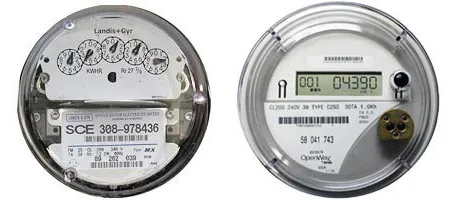![]()
1 – ENERGY Savings Introduction
Credit: SCE
Energy! It’s one of your major cost components. It’s a hot topic and will continue to be so. For most facilities and properties, the cost of energy is not going down—only up. It’s essential to reduce energy costs on your building(s) whether new or existing.
Energy management is an integral part of the day-to-day operations for facility managers and property owners. Rising energy costs and increasing interest in sustainability are driving the need to reduce energy consumption in buildings and develop strategies for better management.
How energy efficient is your building? How does a facility’s overall energy efficiency compare to a portfolio of buildings? Or how does it compare to other similar buildings regionally, nationwide, or internationally?
Doing more with less! That’s an often-heard catch-phrase for FM’s and CFO’s in managing costs. The purpose of this handy guide is much the same. Energy issues can drain your budget and consume valuable resources.
This guide is also essential for facility and property managers along with their financial officers who are serious about reducing energy usage and the cost of it to their organization’s Triple Bottom Line.
How the United States Uses Energy
Electricity and natural gas have been, and continue to be, the two dominant energy sources in the commercial buildings sector. Together electricity and natural gas accounted for about 93% of total energy consumed in 2012. Along with the increase in total electricity consumption, electricity increased its share of total energy consumed from 38% in 1979 to 61% in 2012.
Americans use a lot of energy in homes, businesses, throughout industry, and to travel and transport goods. Thirty percent of energy consumed in the commercial and industrial buildings is wasted. There are five energy-use sectors:
- The industrial sector includes facilities and equipment used for manufacturing, agriculture, mining, and construction.
- The transportation sector includes vehicles that transport people or goods, such as cars, trucks, buses, motorcycles, trains, aircraft, boats, barges, and ships.
- The residential sector includes homes and apartments.
- The commercial sector includes offices, malls, stores, schools, hospitals, hotels, warehouses, restaurants, and places of worship and public assembly.
- The electric power sector consumes primary energy to generate most of the electricity to sell to the other four sectors.
In addition to primary energy use, the industrial, transportation, residential, and commercial sectors also purchase and use most of the electricity (a secondary energy source) the electric power sector produces and sells. These four sectors are called end-use sectors because they buy or produce energy for their own consumption and not for resale.
As a result of advancements in technology, customer expectations, and state and federal policy goals, the electric power sector is evolving with increased deployment of Distributed Energy Resources (DERs). In late 2016, the Federal Energy Regulatory Commission (FERC) issued a Notice of Proposed Rulemaking (NOPR) requiring Regional Transmission Operators (RTOs) and Independent System Operators (ISOs) to facilitate the participation of electric storage resources and aggregated DERs in competitive wholesale markets.
The California Example
Distributed Energy Resources (DERs), which are defined as distribution-connected distributed generation resources, energy efficiency, energy storage, electric vehicles, and demand response technologies, are supported by a wide-ranging suite of California Public Utilities Commission (CPUC) policies.
The passage of the California Global Warming Solutions Act of 2006 (AB 32) has amplified the need for intensive energy efficiency efforts across California. The California Air Resources Board’s (CARB) Draft Scoping Plan for AB 32 implementation states that while “California has a long history of success in implementing regulations and programs to encourage energy efficiency… [it] will need to greatly expand those efforts to meet our greenhouse gas emission reduction goals.”
On average, 30 percent of the energy used by commercial buildings is wasted due to inefficiencies. California has taken this principle to heart and with three decades of leadership and innovation in the public and private sectors, California leads the nation, and perhaps the world, in developing and implementing successful energy efficiency efforts.
Ultimately, the purpose of this guide is to show facility managers how the ENERGY STAR Measurement and Tracking Tool: Portfolio Manager can assist in evaluating and tracking a facility’s energy consumption, help identify underperforming facilities, generate an ENERGY STAR score, track energy savings from implementation of energy efficient measures, and evaluate potential energy saving measures for a facility. With the assistance of ENERGY STAR Measurement and Tracking Tool: Portfolio Manager, facility owners and property managers can make more informed decisions on topics and matters that are based on energy performance.
What’s Your Energy Usage? Good? Bad? Or Ugly?
For California’s buildings, a larger percentage (now 60% as of 2020) of the state’s energy is supplied by renewable resources and of those renewal resources solar power is by far the largest. That’s the good news!
As the transmission of energy moves from these sources to power substations, electrical energy is distributed to fill the various power needs of California’s buildings. During that process between 61% - 86% of the generated power is lost, wasted, along the way and this power supply is also imbalanced, creating power surges and sparking electrical fires. The bad news!
In addition, utilities have also increased demand charges by more than 100...

